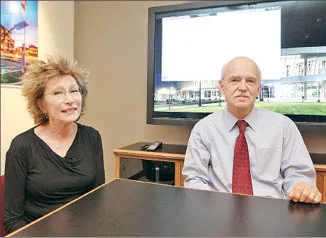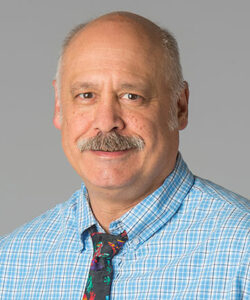MW Consulting thrives on work for repeat clients
Engineering firm designs, integrates electrical, mechanical systems

MW Consulting Engineers PS, of Spokane, says it has relied on its reputation with local clients to maintain a steady workflow through the recession, and it has strengthened its relationship with the U.S. Department of State to help land complex jobs throughout the world.
More than 90 percent of MW's revenue has come from repeat clients, and most of its clients are based in the Inland Northwest, says James Moore, a founding partner in the firm.
Moore says MW has held its own during the recession and its ongoing aftermath, although it hasn't been easy.
"We've never had to work so hard since we started, to maintain what we've achieved," he says. "We avoided the big dip, but the last two to three years absolutely haven't been our best years."
The firm designs complex mechanical and electrical systems for clients in the health care, higher education, and government sectors, says Moore.
Mechanical systems include heating, ventilation, and air conditioning. They also include plumbing, fire protection, and energy management, Moore says. Electrical systems control power distribution, backup-power generation, and automation.
MW often integrates the systems with custom-designed information technology, security, electronic controls, and communications networks, Moore says.
"Our systems are rather invisible, so they're not immediately apparent," Moore says. "But they can include all of the operating systems in a building."
The operating systems in a project typically make up 30 percent to 40 percent of the cost of construction, he says.
Moore says the firm takes great pride in its Spokane roots. Most of MW's engineers are graduates of Gonzaga University, Washington State University, Eastern Washington University, and the University of Idaho.
Those universities are among several schools that also are MW's clients.
"We've been working continuously on 19 college campuses east of the Cascades," he says. "We've been doing a lot of maintenance projects."
Higher-education projects under way include providing certain engineering services for the $32.6 million WSU Northside Residence Hall, in Pullman, and a $15.6 million residence hall on the EWU campus, in Cheney.
Last year, the firm designed electrical, safety, audio-video, and lighting systems as part of a $30.3 million overhaul of the Kibbie Dome on the UI campus, in Moscow, to help elevate the 37-year old structure to a modern multipurpose facility.
Other current work includes finishing mechanical and electrical engineering in an $18.6 million emergency department expansion at Providence Sacred Heart Medical Center & Children's Hospital.
"That's challenging keeping the emergency room operational during the project," Moore says.
Janet Welt, the firm's business manager, says MW also is providing engineering services for a $58 million Providence Medical Park-Spokane Valley outpatient treatment complex under construction in the Hanson Center East commercial park.
In a recently completed project, MW engineered upgrades for a $1 million lighting-system project at the Spokane Veterans Memorial Arena, Welt says.
"The results are higher efficiency, lower costs, and better lighting," she says.
The firm started here in 1984 with four people, including founding engineers Moore and Welt's husband Robert Welt, who are still active with the firm and are two of its six owners, she says.
MW now employs 45 people, including 17 graduate engineers, most of whom are registered, meaning they've passed the licensing exam after working for a required amount of time under supervising engineers, Welt says.
The company occupies about 11,000 square feet of office space in the Wheatland Bank Financial Center building downtown at 222 N. Wall, including the full second floor and parts of the first and fourth floors. Escent Inc., an MW subsidiary that specializes in designing complex lighting systems, also is located on the first floor, she says.
One of MWs strong points is employing the latest technology in its designs, Welt says, adding that staying abreast of the newest technological advances appeals to MW engineers.
"One of the things they like about being here is they can expand the possibilities of their chosen career," she says. "Our engineers are always pushing for what's in the best interest of the project owner."
Moore asserts that technological advances affect engineering perhaps more than any other sector of the construction industry.
"We integrate it in all of the operating systems," he says.
MW's engineers stay current on such advances through continuing education courses, attending seminars and events, keeping up with technology products, and staying abreast of code updates, Moore says.
"We have lunch meetings two or three times a week just to keep up on things," he says. "Our education is every day."
While MW conducts most of its work for clients in the Inland Northwest, Moore asserts MW also is one of a small group of engineering and architectural firms that does a lot of work for the State Department, which is the main federal department that sets and maintains foreign policies. MW's work for the State Department includes electrical and mechanical engineering at U.S. embassies in the Philippines, Dominican Republic, Europe, and Africa, he says.
In one of its largest current international jobs, MW is engineering the mechanical and electrical systems for a $150 million Guam Regional Medical City project, a private hospital on the island of Guam.
In its international work, MW was first hired for an embassy job as a subcontractor for Integrus Architecture PS, of Spokane, which was awarded a contract to design the $35 million U.S. Embassy compound in Bogota, Colombia, in the early 1990s.
MW designed satellite communications, a wat-er treatment facility, HVAC systems, and backup power.
"We're able to design reliable and highly complex, interactive, electrical and mechanical systems," he says. "They have to be reliable since they often are in remote places of the world. We were recognized by the State Department as one of the few teams in the country that knows how to do it and do well, and now we've been doing it for 20 years."
Related Articles


_c.webp?t=1763626051)
_web.webp?t=1764835652)

